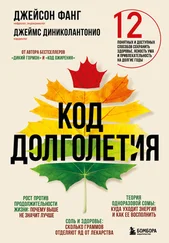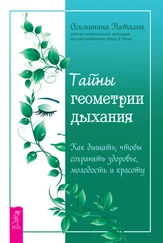Rosell, M. S. et al. ‘Long-chain n-3 polyunsaturated fatty acids in plasma in British meat-eating, vegetarian, and vegan men.’ Am J Clin Nutr (2005): 82: 327–334. URL: https://academic.oup.com/ajcn/article/82/2/327/4862944.
Hirata, Y. et al. ‘Trans-fatty acids promote pro-inflammatory signaling and cell death by stimulating the apoptosis signal-regulating kinase 1 (ASK1)-p38 pathway.’ J Biol Chem (2017). URL: http://www.jbc.org/content/early/2017/03/29/jbc.M116.771519.abstract.
Restrepo, B. J. et al. ‘Denmark’s policy on artificial trans fats and cardiovascular disease.’ Am J Prev Med (2016): 50: 59–76.
Simonen, P. et al. ‘Cholesterol synthesis is increased and absorption decreased in non-alcoholic fatty liver disease independent of obesity.’ J Hepatol (2011): 54: 153–159.
Trappe, T. A. et al. ‘Effect of ibuprofen and acetaminophen on postexercise muscle protein synthesis.’ Am J Physiol Endocrinol Metab (2002): 282: E 551–556.
Bowe. W. et al. ‘Acne vulgaris, probiotics and the gut-brain-skin axis – back to the future.’ Gut Pathogens (2011): 3: 1.
Holzapfel, W. H. et al. ‘Overview of gut fl ora and probiotics.’ Int J Food Microbiol (1998): 41: 85–101.
Beasley, D. E. et al. ‘The evolution of stomach acidity and it’s relevance to the human microbiome.’ PLoS One (2015): 10: e0134116.
Dukowicz, A. C. et al. ‘Small Intestinal Bacterial Overgrowth.’ Gastroenterol Hepatol (2007): 3: 112–122.
Calton, J. ‘Prevalence of micronutrient deficiency in popular diet plans.’ J Int Soc Sport Nutr (2010): 7: 24.
Rose, S. et al. ‘Evidence of oxidative damage and inflammation associated with low glutathione redox status in the autism brain.’ Transl Psychiatry (2012): 2: e134.
Dean, O. M. et al. ‘A role for glutathione in the pathophysiology of bipolar disorder and schizophrenia? Animal models and relevance to clinical practice.’ Curr Med Chem (2009): 16: 2965–2976.
Bishop, C. ‘A pilot study of the effect of inhaled buf ered reduced glutathione on the clinical status of patients with cystic fibrosis.’ Chest (2005): 127: 308–317.
Pizzorno, J. et al. ‘Glutathione.’ Integr Med (2014): 13: 8–12.
Noakes, T. and Sboros, M. Lore of Nutrition: Challenging conventional dietary beliefs. Penguin Random House (2017), p. 22.
Bell, M. et al. ‘A Retrospective Assessment of the London Smog Episode of 1952: the Role of Infl uenza and Pollution.’ Environ Health Perspect 112.1 (2004): 6–8.
‘Seven million premature deaths annually linked to air pollution.’ World Health Organization press release (2014): http://www.who.int/mediacentre/news/releases/2014/air-pollution/en/
Azevedo, B. F. et al. ‘Toxic Effects of Mercury on the Cardiovascular and Central Nervous Systems.’ J Biomed Biotechnol (2012): doi: 10.1155/2012/949048.
‘Cancer and Toxic Chemicals.’ Physicians for Social Responsibility (2010). URL: http://www.psr.org/environment-and-health/environmental-health-policy-institute/responses/environmental-and-occupational-toxicants-and-cancer.html.
McNeill, J. R. Something New Under the Sun: An Environmental History of the Twentieth-Century World New York: Norton, xxvi, 421 pp. (2001).
‘Blood Lead Levels Keep Dropping; New Guidelines Recommended for Those Most Vulnerable.’ CDC (1997). URL: https://www.cdc.gov/media/pressrel/lead.htm.
Shy, C. M. ‘Lead in Petrol: The Mistake of the XXth Century.’ World Health Stat Q (1990): 43: 168–176.
Waalkes, M. P. ‘Cadmium Carcinogenesis in Review.’ J Inorg Biochem (2000): 79: 241–244.
Xue, J. ‘Methyl-Mercury Exposure from Fish Consumption in Vulnerable Racial/Ethnic Populations: Probabilistic SHEDS-Dietary Model Analyses Using 1999–2006 NHANES and 1990–2002 TDS Data.’ Sci Total Environ (2012): 373–379.
Carson, R. Silent Spring. Houghton Miffl in (1962).
‘Organophosphates: A Common But Deadly Pesticide.’ National Geographic (2013).
‘Neonicotinoids, Bee Disorders and the Sustainability of Pollinator Services.’ Current Opinion in Environmental Sustainability (2013): 5 (4): 293–305.
Goulson, D. ‘Ecology: Pesticides linked to bird declines.’ Nature 511 (2014): 295–296.
Gilbert, E. S. ‘Ionising Radiation and Cancer Risks: What We Have Learned from Epidemiology?’ Int J Radiat Biol (2009): 85: 467–482.
‘Chernobyl: The True Scale of the Accident.’ WHO (2005). URL: http://www.who.int/mediacentre/news/releases/2005/pr38/en/.
Pall, M. L. ‘Scientific Evidence Contradicts Findings and Assumptions of Canadian Safety Panel 6: Microwaves Act Through Voltage-gated Calcium Channel Activation to Induce Biological Impacts at Non-thermal Levels, Supporting a Paradigm Shift for Microwave/Lower Frequency Electromagnetic Field Action.’ Rev Environ Health (2015): 30: 99–116.
‘IARC Classifies Radio-frequency Electromagnetic Fields As Possibly Carcinogenic to Humans.’ World Health Organization (May 2011). URL:: http://www.iarc.fr/en/media-centre/pr/2011/pdfs/pr208_E.pdf.
Landrigan, P. J. et al. ‘The Lancet Commission on Pollution and Health.’ The Lancet (Oct 2017). URL:: http://www.thelancet.com/journals/lancet/article/PIIS0140-6736(17)32345-0/abstract.
Cohen, A. J. et al. ‘Estimates and 25-year Trends of the Global Burden of Disease Attributable to Ambient Air Pollution: An Analysis of Data from the Global Burden of Diseases Study 2015.’ The Lancet (2017). URL: http://dx.doi.org/10.1016/S0140-6736(17)30505-6.
Benbrook, C. M. ‘Trends in glyphosate herbicide use in the United States and globally.’ Environ Sci Eur (2016): 28: 3.
Wu, J. et al. ‘Alzheimer’s Disease (AD)-Like Pathology in Aged Monkeys after Infantile Exposure to Environmental Metal Lead (Pb): Evidence for a Developmental Origin and Environmental Link for AD.’ J Neurosci (2008): 28: 3–9.
‘Tobacco control can save billions of dollars and millions of lives.’ World Health Organization Media Centre (2017). URL: http://www.who.int/mediacentre/news/releases/2017/tobacco-control-lives/en/.
‘The Master Settlement Agreement: An Overview.’ The Public Health Law Center (2015). URL: http://publichealthlawcenter.org/sites/default/files/resources/tclc-fs-msa-overview-2015.pdf.
West, R. and Fidler, J. ‘Smoking and Smoking Cessation in England 2010: Findings from the Smoking Toolkit Study.’ University College London (2011).
For the history of amalgam fillings see, for instance, Rathore, M. et al: ‘The Dental Amalgam Toxicity Fear: A Myth or Actuality.’ Toxicol Int (2012): 19 (2): 81–88.
Читать дальше
Конец ознакомительного отрывка
Купить книгу
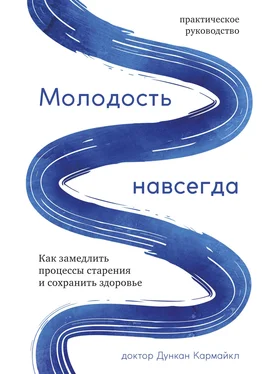


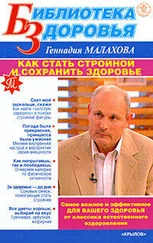

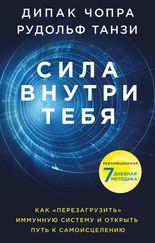

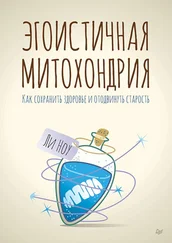
![Дипак Чопра - Сила внутри тебя [Как «перезагрузить» свою иммунную систему и сохранить здоровье на всю жизнь] [litres]](/books/405248/dipak-chopra-sila-vnutri-tebya-kak-perezagruzit-thumb.webp)
